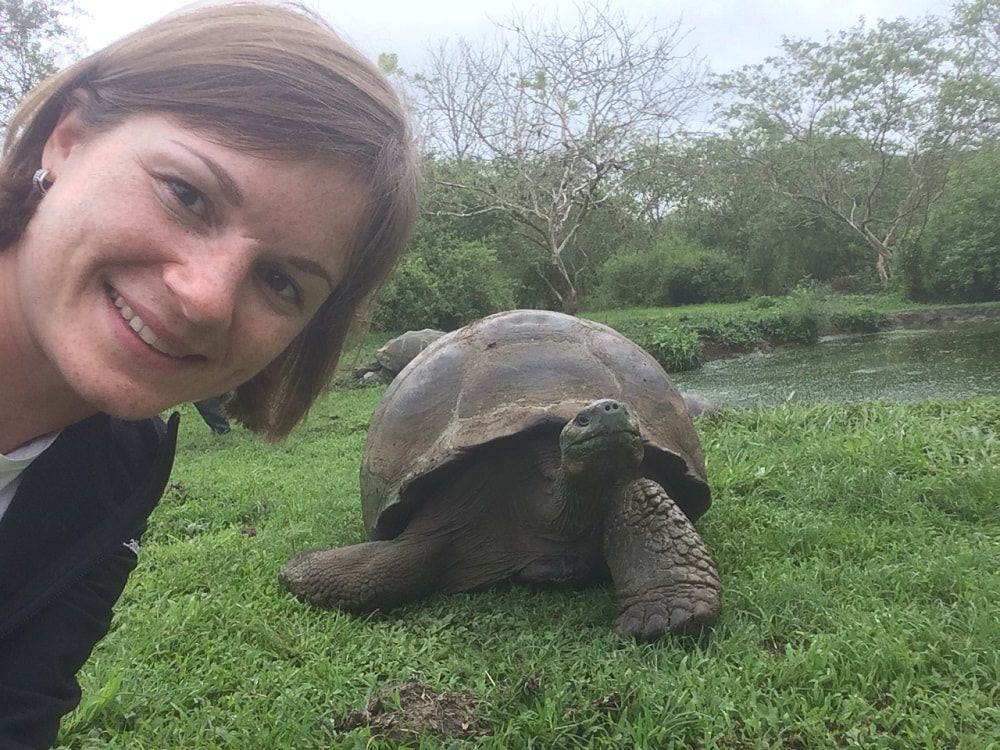Petra on the Galapagos
Earlier Petra already wrote about her first days on the Galapagos Islands. Did you miss this or do you want to read it again? Then take a look at Petra on the Galapagos part 1.
Part 2: Time flies
Today is already our third day on the Galapagos Islands. At seven o'clock breakfast is ready for us and the bartender knows by now that I like to start my day with a nice cappuccino. After breakfast it is time for a wetlanding on Punta Cormorant, located on the island of Florana.
Day 3: an impressive day full of animals
We set foot at Punta Cormorant. The first thing that strikes me is the dark lava in combination with the green bushes of the Palo Santo trees. We walk between the iguanas to the other side of the island. Once we arrive here we see a big green sea turtle making its way back to the ocean. She has just laid her eggs on the small hills of the beach and now she can go back into the water. We are kindly asked to only walk around the beach and not to go to the hills so that the eggs are not accidentally damaged. While we admire mother sea turtle, we see little rays in the water a little further on. We walk on to the middle of the island where there is a lagoon with a small colony of flamingos. The feathers are bright pink because of the shrimps they eat. We have a look at these special birds and we even see some little ones.

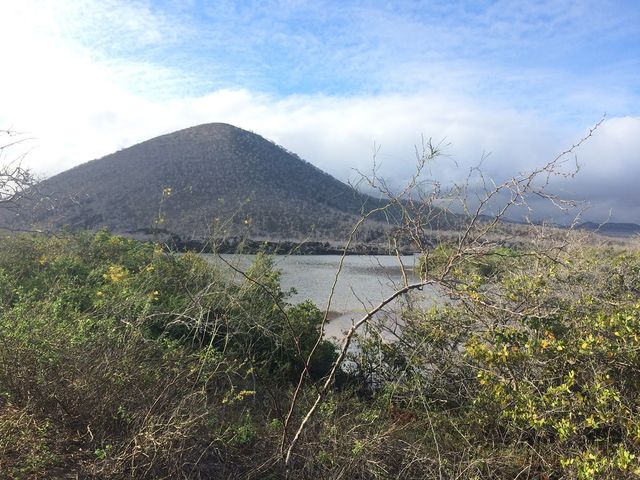
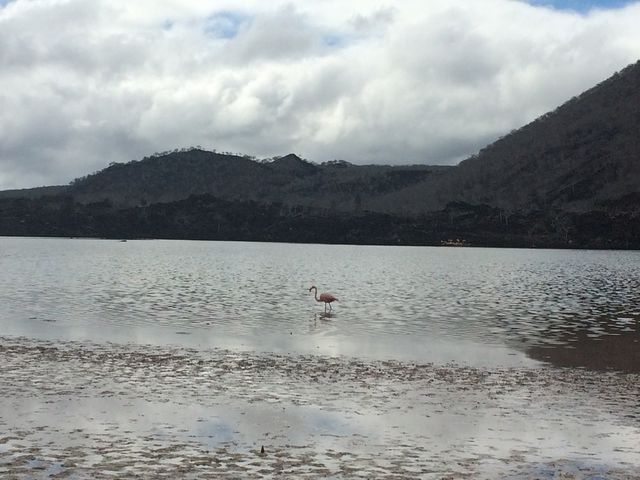
After our walk over the island we return to our ship. While putting on our wetsuits we sail towards Devil's Crown. From the pangas we jump into the water. Devil's Crown is a ring-shaped rock just off the coast that rises from the sea like a crown, when you see it from a distance. The reason it is called the 'devil's Crown' is because it is believed that only a devil can wear such an uncomfortable crown. This place is considered one of the best diving spots in the archipelago. In fact, the rocks are an attractive place for small fish, which in turn attract large fish. For example, there is a good chance of spotting hammerhead sharks, whitetip reef sharks, sea turtles and large rays such as manta rays and spotted eagle rays. Unfortunately we have less luck with spotting animals in Devil's Crown, the current is rather strong and after a few attempts to stay together our wise guide decides that we better go back aboard the panga.
As soon as we go on board, a delicious barbecue is waiting for us on the sun deck. After lunch we have some time for ourselves. I go to my cabin, to call home. I tell them on the phone how incredibly special it is to be here. From my cabin I see some 'special' waves in the distance. While I look closer I see it again, but this time I realize that it is a big manta ray. Because I don't believe it yet I consult with the guides on board. They indicate that this is very well possible and that the manta rays probably 'jump' high out of the sea to release the parasites at their underside.
Send cards at Post Office Bay
In the afternoon we write some postcards that we post at post-office bay. The Post Office Bay is located on the north side of the island of Floreana. Here the legend of pirates and whalers lives on. The first whalers placed a mailbox here and left their messages for the home front. The idea was that other sailors would take the letters with them and make sure the messages were delivered to the right address. The original mailbox has long since disappeared, but letters can still be posted. Today the mail is still sent in the same way as in the time of the whalers. We left cards behind with the hope that the next visitors will take our cards with them and deliver them. Meanwhile 3 of my 4 cards have been delivered. Of course I also took a card with me and delivered it in the Netherlands.
After this nice visit we can snorkel for a while. From the shore I can already see some rays swimming and it takes some courage to go into the water. I manage to overcome my fear and slowly enter the water. Very close by I see a large sea turtle swimming, how special! When we return to the beach I am warned, there are several rays near the beach by now. I look around and realize that I am surrounded by maybe five rays. Calm down, shuffling through the sand I walk to the beach.
In the evening it's the birthday of one of the guests on board. The crew dresses in style and provides a fun party on board, where the 'Origin boobies band' is presented. The captain of the ship sings the song of La Bamba to the fullest." Yo no soy marinero, Yo no soy marinero, soy capitan."
Day 4: Back to civilization for a while
After a pleasant evening full of music and dancing we wake up the next day off the coast of the island of Santa Cruz. This island is the middle one of the three inhabited islands in the archipelago and is seen as the beating heart of the Galapagos. Today we are going to explore the island.
After a few days on uninhabited islands it feels almost strange to see an island that is inhabited. The island has its own infrastructure with several hotels, restaurants and shops. We are taken to the El Manzanillo Giant Tortoise Reserve in the highlands of Santa Cruz. This is a reserve for the giant turtles. We put on rubber boots to walk through the area. It is a marshy area with 600 giant turtles. At first we only see a few large turtles here and there, but as we walk further through the area we see them all around us. Some with shorter or longer necks, wider or narrower shells. It is nice to see how these special animals can live here in freedom on the farm.
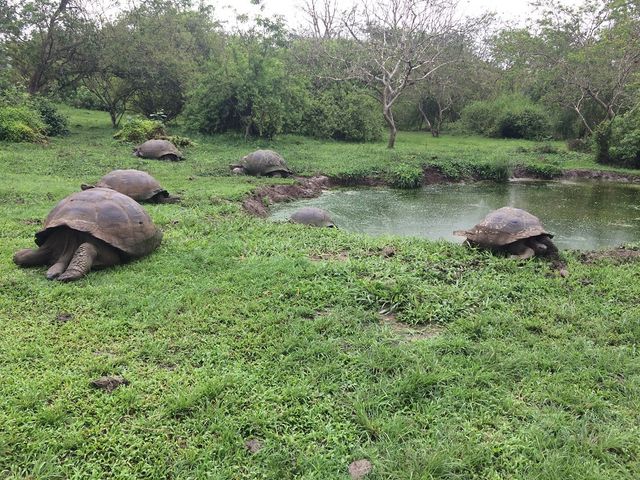

The day continues with a visit to Los Gemelos. The name refers to the two craters that are located just along the main road. In reality they are not craters, but they are holes that were created when the roofs of the empty magma chambers collapsed. This happened because of tectonic shifts and erosion. In the craters a beautiful green forest can be seen, with bromeliads, orchids, mosses and many birds, like several Charles Darwin Finches. We make another walk through the forest and we walk to one of the naturally formed lava tunnels. A special geological formation. Along the way we see special birds such as the woodpecker finch and a barn owl.
Lonesome George
In the afternoon we visit the Charles Darwin Research Station, which has been carrying out activities for the conservation and restoration of the flora and fauna of the archipelago since the 1960s. Here we learn more about the giant turtles. When the turtles are big they are transferred to other islands. We also visit the exhibition made in honour of the lonely George. Lonesome George' was the last turtle on the island of Pinta and died in 2012 at an age of 102 years. In his final years he was known as the rarest creature in the world. Today, George is an important symbol for the conservation of the Galapagos and the rest of the world. After this visit we walk around the centre of Puerto Ayora. Together with other guests I drink a beer.
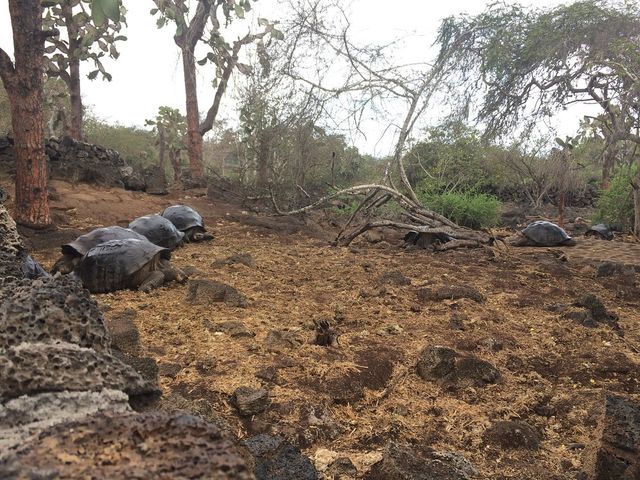
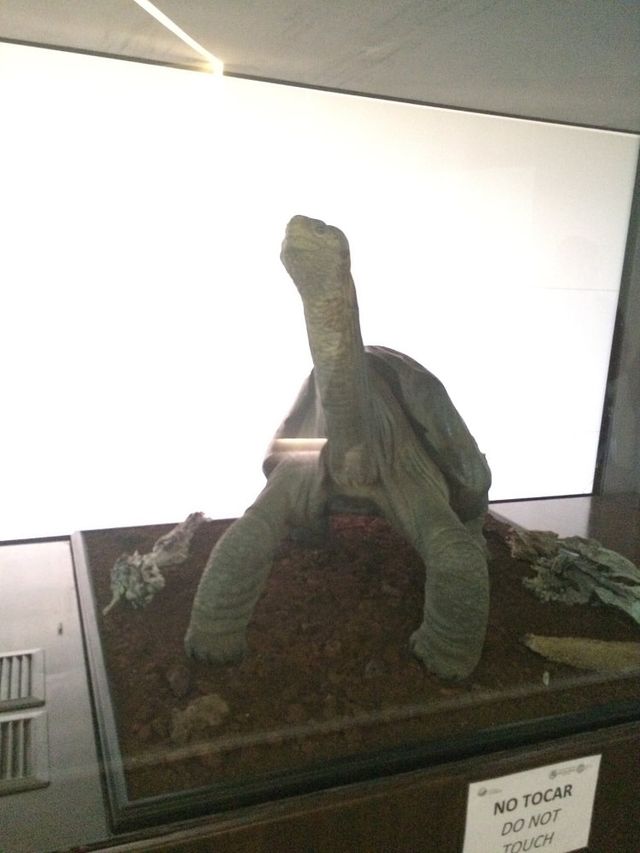
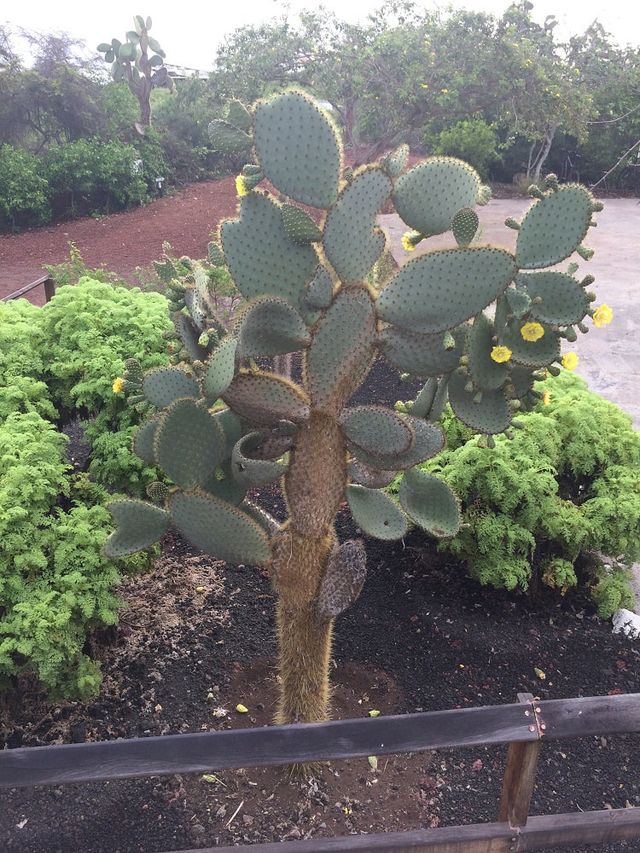

At the end of the afternoon we return on board where in the evening another delicious dinner will be served. Our Galapagos cruise is already halfway, time flies by, or should I say, sails by. In the evening we sail north to the island of Sombrero Chino.
Visit the Galapagos?
Would you like to visit the Galapagos Islands yourself and are you curious about the possibilities? Then take a look at our page about the Galapagos. Here you will also find travel itineraries that we have put together for inspiration. You can book these trips directly, but we are also happy to create a personal programme based on your wishes and ideas.
Do you have a question? Feel free to contact us. Call +31 73 610 62 04 or send an e-mail to info@sapapanatravel.nl. We are happy to help.
